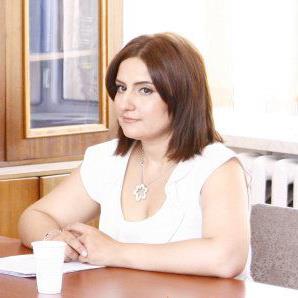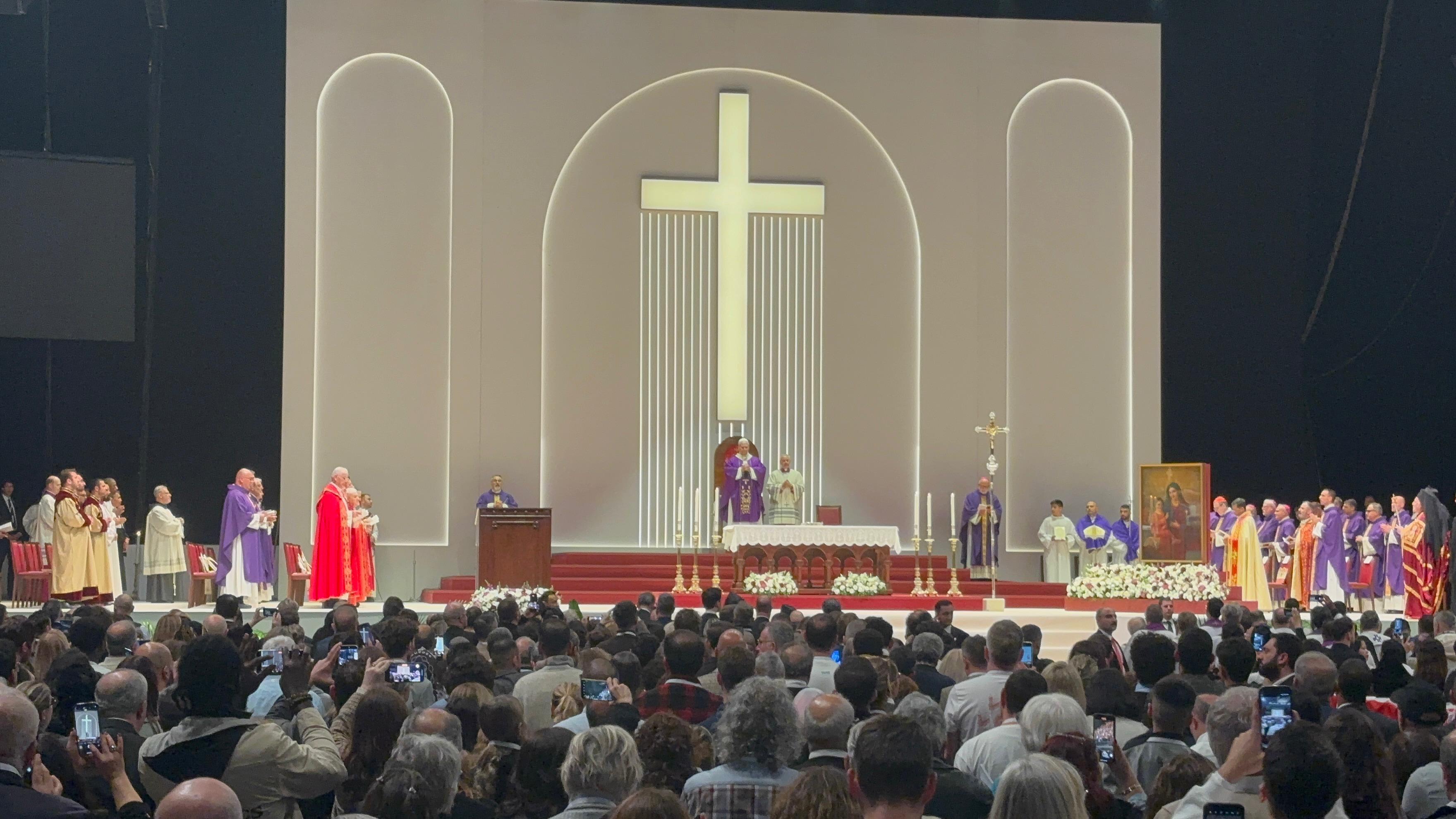Meline Anumyan from Research Center for Studies of Western Armenians' Problems published her study on Lom (Bosha) people in Artvin and Rize. Visitng Artvin and Rize on November 2016, Anumyan's work is based on Lom people's current way of life and perception of their identities. We talked to Anumyan about Lom people who are unknown by many people.
How did come up with
the idea of studying on Bosha people living in Turkey?
For 8
years, I have been working in Research Center for Studies of Western
Armenians' Problems. In the center, we carry out studies not only on
Western Armenians (Armenians living in Turkey), but also on other
minorities and ethnic groups living in Turkey. In 2015, Zaza director
Belgin Cengiz visited our center. Talking about the movies on Romani
people in Turkey, she also told about Bosha (Lom) people living in
Artvin. I came up with the idea of studying on Bosha people that day.
Afterwards, Armenian Ministry of Diaspora decided to finance this
idea and covered my visits to Turkey for research.
Who are Bosha or Lom people?
In the past, Romani people who belong to Armenian Apostolic Church were called “Bosha” in the dialect spoken in Erzurum. Since they were engaged in making and selling sieves, they were also called “sieve people” or “Armenians with sieves”. However, Lom people are not Armenian; they have their origin in Aryan people. According to some researchers, Romani people are coming from India. These Romani people left India around 10th-11th centuries and settled in Asia, staying in Iran for some time. In the secret language of Bosha people, Lomavren, we see many Armenian words as well as Persian words. This indicates that some of Lom people came from Persian Empire and some of them came from Mesopotamia to Armenia. In the late 19th century, Bosha people were living in Western Armenian cities, especially in Sivas. Some of them were in Mesopotamia. Probably, they came to Erzurum through Euphrates River after Timur's invasion and then went to Oltu, Kars and Trabzon from there. In 1828, they settled in Aleksandrapol (Gyumri) and Cavakhk. Lom people joined in Armenian Apostolic Church, since they were living along the border of historical Armenia. Today, all Lom people living in Turkey are converted to Islam.
 Where did you carry out
your research? How many people did you interview with?
Where did you carry out
your research? How many people did you interview with?
I
carried out the field study on November 2016 in Hopa, Şavşat,
Ardanuc, Arhavi distircts of Artvin city and Ardeşen district
of Rize city. I carried out in-depth interviews with 25 people. My
Hemshin Armenian friends helped me a lot to get in touch with Bosha
people there and carry out interviews. I am indebted to them.
How do the Lom people whom you have interviewed define their identity?
In Turkey, majority of Lom people hide their identity, since they are subjected to discrimination and isolation because of their ethnicity. In the past, Lom people had lived as a more closed society compared to others. Lom people in Turkey also avoid to be considered as Armenian. They are aware that their language has a lot of Armenian words. The Bosha people to whom I talked stated that they feel weak because they are isolated. Bosha people tend to deny and forget their identity voluntarily. This is especially true for younger ones.
Many of the Bosha people living in Black Sea region in Turkey claim that they are the descendants of Meskhetian Turks. In this way, they also support the Turkish official thesis. They also claim that they have many Armenian words, since they live side by side with Hemshin Armenians. Some of them think that they are from India.
Do Lom people speak Armenian in their daily lives?
To be clear, let me say this: Lom people living in Black Sea region don't speak Armenian, but their own language, Lomavren, which is a mix of Romanian and Armenian languages. Today, Lomavren is spoken mostly by elder Bosha people especially as a secret language. Young Bosha people living in the region don't know and cannot speak their language. This is true for Bosha people in Black Sea region. I haven't visited the other regions where Bosha people live yet. According to Turkish researchers, Lom people, unlike Rom and Dom people, are forgetting their language. Rom and Dom people preserve their language.
How do Bosha people make their living?
It is known that Bosha men had been engaged in sieve production throughout the history. Bosha women had also an important role in providing for the family. They used to go from door to door for selling the sieves that their husbands made. Today, they have different jobs in Turkey. Bosha people living at the center of Artvin usually work in tea factories and private sector. There are also Bosha people who work as police officers, teachers or shoemakers. In Artvin, there are many Bosha people working as teachers. For instance, more than 40 Bosha people are teachers in Ardanuc district. Majority of Bosha people in Artvin are working in the municipality.
What were the barriers that you faced with during the field study?
The most important barrier was the fact that Lom people usually avoid being interviewed. This was partly because they have always been a closed society. Furthermore, they are also afraid of being considered as Armenians in Turkey.
How did you obtain the data concerning the Lom population in Turkey?
The data is based on the information that Lom-Der, which was active between 2009 and 2015 in Artvini provided and the estimations of the interviewees.
Will you continue researching in different regions?
Yes, I am planning to expand this research to include Lom people living in other regions in Turkey, especially in Çankırı and Sivas. I want to collect this research into a book.
Where do Lom people live?
The studies split Romani people living in Turkey into 3 categories: Rom, Dom and Lom (Bosha) people. Rom people speak Turkish and Dom people speak Kurdish. The Lom people who speak Lomavren, which resembles Armenian, are called Bosha. According to some researchers, Armenians gave the name of Bosha to Lom people. Vardan Voskanyan, who is known for his studies on Iran, argues that this name was given because Lom people use the letters “p” and “ş” a lot. Today, Lom people live in Turkey, Georgia and Armenia.
According to Anumyan's research, Lom people live in the following regions in Turkey: Şavşat, Arhavi, Hopa, Ardanuş, Yusufeli and Borçka districts of Artvin; Ardeşen district of Rize; Oltu and Olur districts of Erzurum; and the cities of Trabzon, Samsun, Çankırı, Tokat, Kars, Ardahan, Sivas, Bayburt, Erzincan, Kastamonu, Gümüşhane, Nevşehir, Kırşehir, Bursa and İstanbul.
Anumyan's research shows that the socioeconomic condition of Lom people hasn't been well throughout the history. According to retired D.E. living in Şavşat, Bosha people are one of the poorest circles in Artvin. D.E. says that this is nothing new and it has always been like this. 62-year-old R.D. says that Bosha people hadn't been given any land before İsmet İnönü. He says that Bosha people were given some lands during the time of İnönü, but they couldn't have claimed them out of fear. Saying that only 2% of around 2500 Bosha people living in Ardeşen are property owners, R.D. says that 98% of Bosha people are tenanted. According to R.D., Bosha people are not even given grave plots in Ardeşen. In other settlements in Black Sea region, municipalities don't lean to give grave plots to Bosha people. Bosha people are only allowed to bury their deceased in the cemeteries in Şavşat and Ardanuç. K.K. from Hopa district says that Ardeşen Municipality hasn't allowed his relatives living Ardeşen to be buried there. It is said that the family of a Bosha who died in Ardeşen is forced to take the body to Şavşat or Ardanuç by the Ardeşen Municipality.
Lom people say that other people in Turkey don't even know that they exist. K.K and O.T. say that people were surprised to hear that they are Bosha, when they were doing their military service. O.T. says, “Many of the people in Turkey don't even know that we exist, since we are a very small minority group.” Another Bosha named Yaşar says that Turkish state regards Lom people as unreliable and claims that Lom people were not allowed to be soldiers and public servants before '50s.
Anumyan points out that Bosha people started to be organized in the recent years. In 2009, an association called Lom-Der was established in Hopa district, which was active until 2015. Founders of the association say that they established it with the purpose of researching and preserving their lost culture. They note that the word “Lom” doesn't define an ethnic identity; rather, it defines a “way of life” and “culture”.
Interviewed by Anumyan, one of the founders explains the mission of the association as the following: “The purposes of the association were to research and preserve Lom culture, provide scholarship to the children of poor families, eliminate child marriage, include women in social life, prevent discrimination against Bosha people, employ young Bosha people, encourage the engagement of Lom people in Turkish society and make documentaries about Bosha people.”
Lom-Der was closed down because of financial problems. According to Lom-Der, many Lom people didn't become a member of the association, because they don't want to reveal their identities.
According to Anumyan's
research, Lom people living in Çankırı preserve their language
more compared to the ones in Artvin and use it as a secret language.





